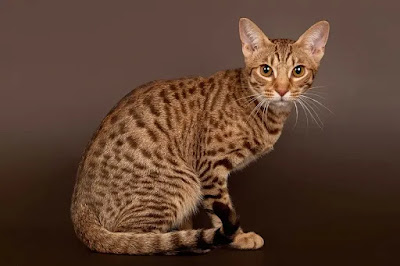There are numerous cat breeds throughout the world, and each one has its own distinct set of traits. There are other more exotic cat breeds that are less well-known than Siamese or Maine Coon, despite the fact that most people are familiar with these popular varieties.
Here are 10 of the world's most exotic cat breeds if you're seeking a cat that's a little different from the norm.
1. Bengal Cat
A domestic cat and an Asian Leopard Cat were crossed to create the exotically beautiful Bengal. With its extraordinarily high levels of energy, excellent athleticism, and a profusion of intelligence, the Bengal can be difficult to handle, staying true to its wild origin.
However, it is also a tonne of fun and can be taught, walked, and even taken swimming!
2. Main Coon
The Maine Coon is a huge, ferocious-looking animal that can weigh up to 20 lbs. It resembles a feral bobcat in appearance. The Maine Coon is as domestic as they get; it is kind, affectionate, and patient, despite the fact that no one is really sure how it came to be. It even possesses certain wildcat characteristics, such as excellent hunting abilities and a desire to explore the outdoors and the water while being leashed.
3. Savannah
The Savannah Cat is an African Serval Cat and a domestic cat hybrid. Their unusual spotted coat pattern, tall, thin physique, and long legs define them. Savannahs need a lot of exercises to keep healthy because they are known for being very energetic and active.
4. Chausie
A domestic cat and a jungle cat were crossed to create the hybrid cat breed known as the Chausie. They are renowned for their mischievous, vivacious personalities as well as their short, wild-looking coat.
5. Egyptian Mau
The Pharaoh Cat is another common name for the Egyptian Mau, which is an Egyptian native. It is a little pet with a long lifespan that occasionally exceeds 18 years. It is a breed that requires little maintenance and gets along with most people. Grooming is only occasionally essential. It is a loving cat that is happy to give love to others.
6. Serengeti
It was intended for the Serengeti to appear extremely wild. Because cat fanciers were jumping on the exotic pet bandwagon, the Serengeti was created by a conservation biologist who sought to breed domestic cats with wild appearances, preserving wild cat species from being captured and domesticated. Through the crossbreeding of Bengals and Oriental Shorthairs, the experimental breeding programme was successful in recreating the Serval's appearance. The outcome is the Serengeti, a loyal and active cat breed.
7. Ocicat
The Ocicat is another animal with a unique appearance that is likely to catch anyone's eye with its lovely coat. Despite the name, the breed is American in origin. Even when meeting new people, this cat is incredibly affectionate. It is a playful pet whose activity may make you think of a dog. Even playing catch with you or the kids is possible.
8. Caracal
The caracal is an animal found in scrubby forests and plains in Asia and Africa. Its huge ears are the most striking feature. It can occasionally hunt solely by sound thanks to its excellent hearing. The caracal is a nocturnal cat that spends most of its time alone. If you have a permit, you can keep them in Florida or Idaho.
9. Bobcat
All over North America, bobcats live in forests and mountains. It is a silent, nocturnal predator that mostly consumes small animals, birds, and rodents. Even though it is a wild animal, the bobcat occasionally adapts to people's presence and will reside in populated regions. As a result, it might occasionally take animals or pets. With permission, you can own them in Missouri and Michigan.
10. Ocelot
The ocelot is a versatile mammal that has recently expanded its range in the wild. Being an active cat, it could get less sleep than other domesticated animals. Although it normally lives alone, in densely populated places, it may form small groups. It possesses sharp vision as well as a good sense of smell. They mostly prey on small mammals, though occasionally they also catch fish or crustaceans. Permission is required to own an ocelot in either Florida or Texas.
Written by Melita Pinto














.jpeg)





0 Comments